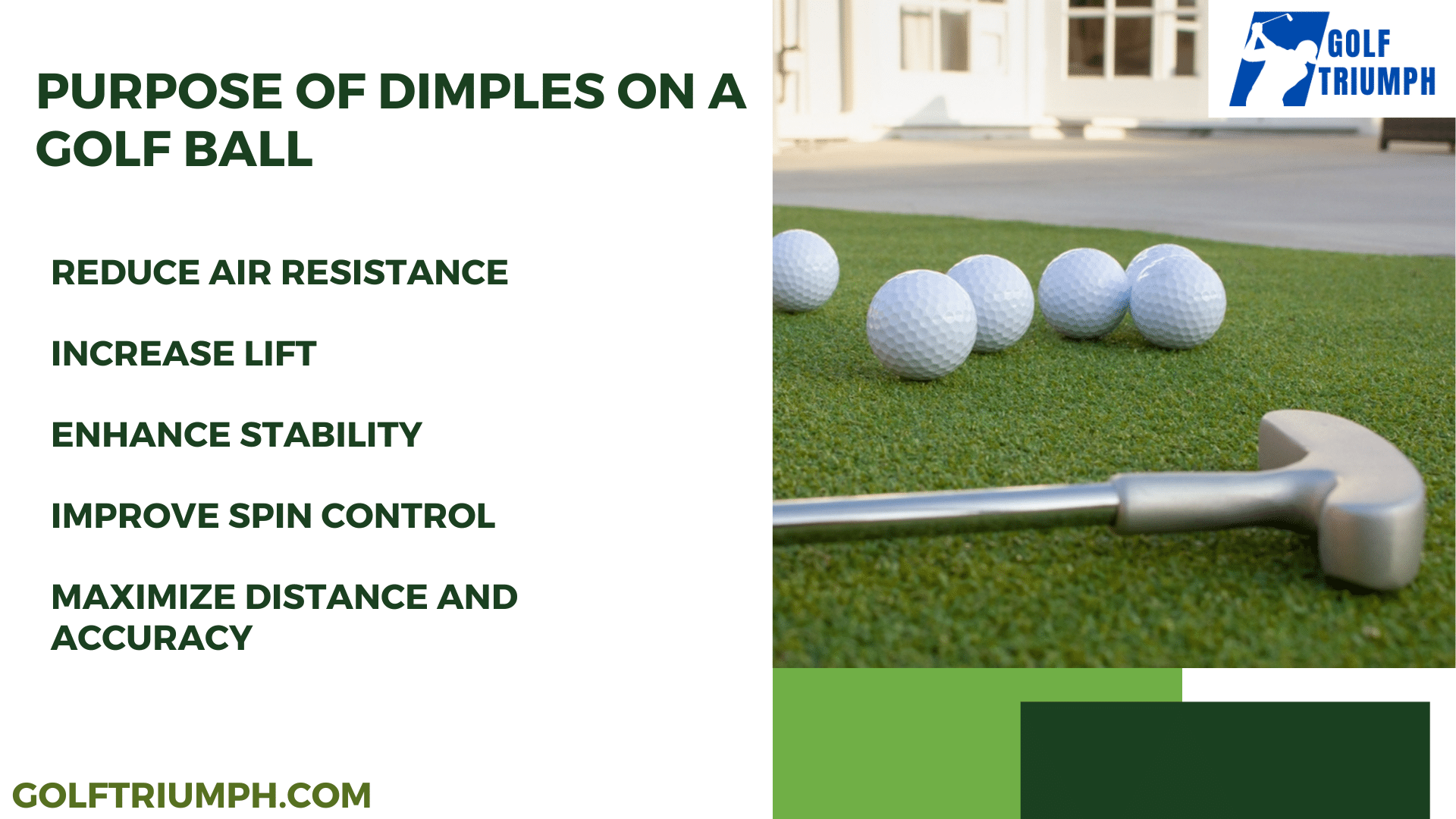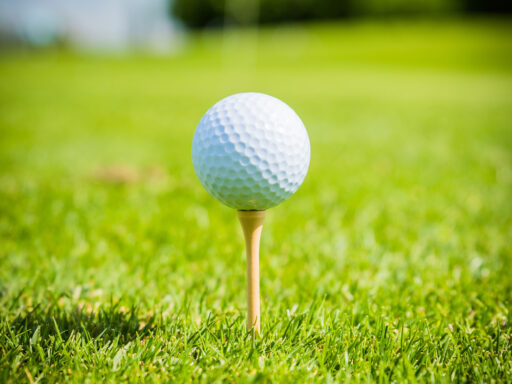
Have you ever wondered why golf balls are covered in those seemingly random dimples? These tiny indentations aren’t just for show—they play a crucial role in the game. But here’s a question that has puzzled golfers and enthusiasts alike: how many dimples are actually on a golf ball? While you might assume the number is set in stone, the truth is a bit more complex. In this article, we’ll delve into the fascinating world of golf ball design, uncover the varying dimple counts. Also explore how these little features can impact your game. Prepare to have your curiosity piqued and your golf knowledge expanded as we unravel the mystery behind the dimple count of your favorite sport’s most iconic accessory.

The Evolution of Golf Ball Dimple
Golf balls have evolved remarkably since their earliest days. Imagine the original golf balls, crafted from wood or leather and stuffed with feathers , known as feathery balls. These primitive spheres were smooth, leading to erratic and unpredictable flight patterns that left players struggling for consistency. It wasn’t until the late 19th century that a groundbreaking innovation transformed the game forever.
Enter William Taylor, a visionary in golf ball design. Taylor’s keen observation of the natural world led to a game-changing revelation. Balls with random dents or imperfections soared more predictably than their smooth counterparts. This seemingly simple insight sparked a revolutionary shift. Taylor embarked on a quest to perfect this observation, experimenting with intentionally dimpled surfaces. His efforts culminated in the creation of the first dimpled golf balls. A design that showcased dramatically improved performance and consistency.
This pivotal breakthrough set the stage for the sophisticated golf balls we use today. Modern golf balls are engineered with intricate dimple patterns that are far from random. They are meticulously crafted to enhance flight stability, control, and distance. Each dimple is strategically placed to minimize drag and maximize lift, transforming how the game is played and enjoyed.
So the next time you tee up, remember that those seemingly simple dimples are the result of over a century of innovation and experimentation. They’re not just design elements but vital components that shape every swing and shot you take. Dive into the story behind the dimpled golf ball. Also discover how this small yet mighty feature continues to drive the game forward.
The Role of Dimples in Golf Ball Performance
The dimple pattern on a golf ball is not just for aesthetics; it plays a very important role in the ball’s performance. When a golf ball is struck, it travels through the air around the ball. The dimple design creates a layer of air around the ball, which significantly affects its flight characteristics.
A smooth-surfaced golf ball would experience more drag due to turbulent airflow, which would hinder its distance and accuracy. Dimples on a golf ball create a controlled turbulence that reduces drag and allows for a smoother, more stable flight. This results in increased distance and better control, as the dimple pattern helps to manage the air pressure around the ball.
If you are Dreaming of breaking 100 on the golf course? Uncover essential insights and expert tips in this article to help you smash through this scoring barrier. From effective techniques to game-changing strategies, find out how to refine your skills, boost your confidence, and achieve your golfing goals with ease!
The Science Behind Dimples

Understanding the physics of dimples is key to appreciating their impact on golf ball performance. The layer of air around the ball, known as the boundary layer, is influenced by the dimple pattern. As the ball moves through the air, the dimples create small vortices that reduce the size of the turbulent wake behind the ball. This reduction in drag allows the ball to travel further and more efficiently.
Dimples also play a important role in creating lift. When a golf ball is struck, the air pressure above and below the ball differs due to the dimple pattern. This difference in pressure generates a lifting force that helps the ball stay in the air longer and achieve greater distance. The precise arrangement and depth of the dimples are designed to optimize this lift and minimize drag. Providing the best possible performance.
How Many Dimples Are on a Golf Ball?
The number of dimples on a golf ball can vary widely, typically ranging from 300 to 500. This variation is due to different golf ball manufacturers and their design preferences. The exact number is less important than the overall dimple pattern, which is engineered to enhance the ball’s aerodynamic properties.
For instance, a ball with 400 dimples might offer a different performance than one with 300 or 500 dimples. The dimple pattern affects various aspects of the ball’s flight, including distance, control, and spin. Therefore, while the number of dimples is a key factor. It is the design and arrangement of these dimples that truly determine a ball’s performance.
The Impact of Dimple Patterns on Ball Flight
The dimple pattern of a golf ball influences its flight characteristics in several ways. A higher number of dimples can lead to more control and better performance in windy conditions. While fewer dimples might result in a different trajectory. The design of the dimples affects the ball’s spin rate, stability, and overall flight pattern.
For example, a golf ball designed for maximum distance might have fewer, larger dimples to reduce drag. While a ball designed for better control might feature a more complex dimple pattern to increase spin. Each golf ball design is tailored to achieve specific performance goals. Making the choice of dimples and their arrangement crucial for optimizing performance.

The Benefits of Dimples in Reducing Drag
One of the primary benefits of dimples on a golf ball is their ability to reduce drag. When a golf ball is in motion, the layer of air around it is disrupted by the dimples. This disruption helps to streamline the airflow and reduce the size of the wake behind the ball, which in turn decreases drag.
Reducing drag is essential for achieving greater distance and efficiency. A ball with less drag can travel further with less effort, allowing golfers to hit their shots farther and with greater accuracy. The dimple pattern is designed to optimize this effect, ensuring that the ball performs well under various conditions.
The Creation of Lift Force
In addition to reducing drag, dimples on a golf ball also play a critical role in creating lift. The dimple pattern affects the air pressure around the ball, generating a lifting force that helps the ball stay in the air longer. This lift is crucial for achieving greater distance and improving overall performance.
The layer of air created by the dimples helps to manage the pressure differences above and below the ball. This management of air pressure contributes to the ball’s lift and stability during flight. By optimizing the dimple pattern, manufacturers can enhance the ball’s lift force and improve its overall performance.
Choosing the right golf ball can significantly impact your game, and understanding how various design features align with your swing speed and playing style is key to optimizing performance. Here’s a practical guide to help you select the perfect golf ball for your needs
Conclusion
The number of dimples on a golf ball is a critical factor in its design and performance, but it is the overall dimple pattern and its arrangement that truly determine how the ball performs. Whether a golf ball has 300 or 500 dimples. The design of these dimples plays a crucial role in optimizing ball flight, lift force, and reducing drag.
Understanding how many dimples are on a golf ball and their impact on performance provides a window into the intricate science behind golf ball design. Every dimple on a golf ball is not just a random indentation but a critical factor that influences the ball’s aerodynamic properties. These dimples are meticulously engineered to create a turbulent air flow around the ball, reducing drag and enhancing lift. This delicate balance between drag and lift is crucial for achieving optimal distance, accuracy, and control.
As technology and materials continue to advance, the future of golf ball dimple design is poised for exciting innovations. Imagine golf balls with adaptive dimple patterns that adjust based on swing speed or environmental conditions. Future developments may incorporate smart technology. Such as sensors that provide real-time feedback on ball performance or advanced materials that further optimize flight characteristics. The possibilities are as boundless as they are intriguing.
With each new development, golfers can look forward to a game that is more precise and enjoyable. The quest for the perfect dimple pattern is ongoing, driven by a passion for excellence and a commitment to improving the game. As we move forward. The fusion of science and sport will undoubtedly lead to breakthroughs that will elevate the golfing experience to new heights.





